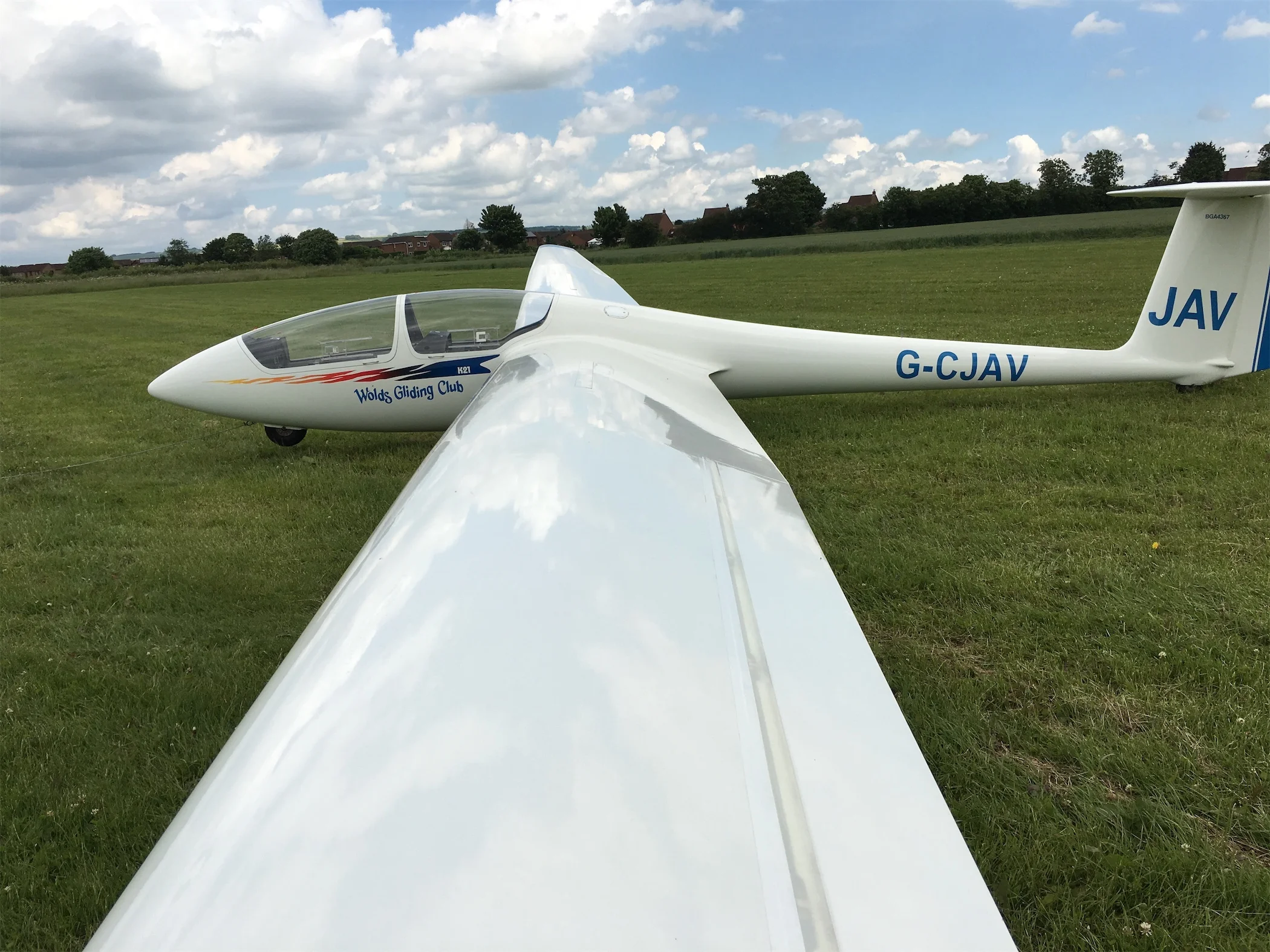The ‘Science’
Once in the sky, and without an engine, a glider is always coming down (through the air.) Typically a glider will glide down at a rate of 200ft per minute (as opposed to 10,000ft per minute if you jumped out :-)
All other things being equal, this would be fun - but not GREAT fun.
Fortunately all other things are not equal. If you were able to see the air in the sky it would look like a giant lava lamp.
There are huge bubbles of air (hundreds of meters in diameter, weighing tens of thousands of tons) rising and falling at hundreds of feet per minute. If you fly into one of these bubbles and it’s going up faster than you’re coming down then the net result is that you climb! The bubbles are known as thermals and circling inside these thermals is called thermalling. It’s what the birds do!
On a nice day, the sun heats the ground and the ground warms the air above it. This warmer air is more buoyant and will eventually form into a bubble and float up into the sky. When the bubble gets high enough the moisture within it condenses to form a puffy white cloud (called a cumulus.)
The art of the glider pilot is to find one of these bubbles and try to stay within it. A good place to look is under the puffy white clouds!
On a good day, a pilot can stay up all day and travel hundreds of miles - gliding from thermal to thermal - using clouds like stepping stones.
But that would be too easy…
For every rising bubble of air, there is an equivalent mass of descending air. We call this sink. This adds a level of jeopardy - turning the game from stepping stones into snakes and ladders!
The Sport
Once you’ve mastered the mechanics of controlling the aircraft (takeoff/landing etc) - you will then spend the rest of your gliding career trying to read the sky and predict where the best thermals can be found. Finding them is only half the battle. Next, you will need to practice trying to stay within these thermal bubbles - as they try to spit you out the side.
Once you can do that then you can start going places - perhaps even racing against your friends. During the spring and summer, members will regularly chase each other around Yorkshire and Lincolnshire - flying over the river Humber and down the river Trent - or perhaps over to Wetherby, Harrogate and Ripon.
Occasionally you will mis-judge it and land in a field. This will cost you dearly in the bar afterwards as you buy a beer for everyone who came to retrieve you and your glider (using a large trailer.)
The Training
Please see here for an explanation of how the training is delivered.
The Weather
We don’t generally fly if any of the following apply:
Strong wind (greater than 20 knots or particularly gusty)
Fog (or low cloud)
Rain (or snow)
Slightest hint of lightening
…all other times we can fly. The best conditions for staying up are a light wind and a bright sunny day with some puffy clouds after a cold night.
The Club
Please see here for an overview of how the club operates.


